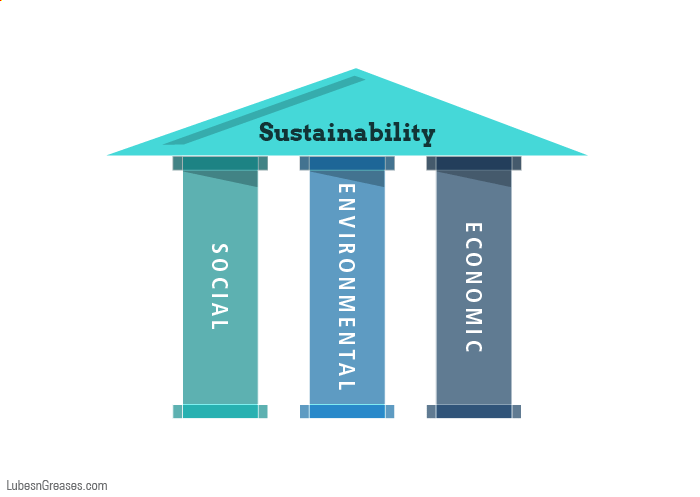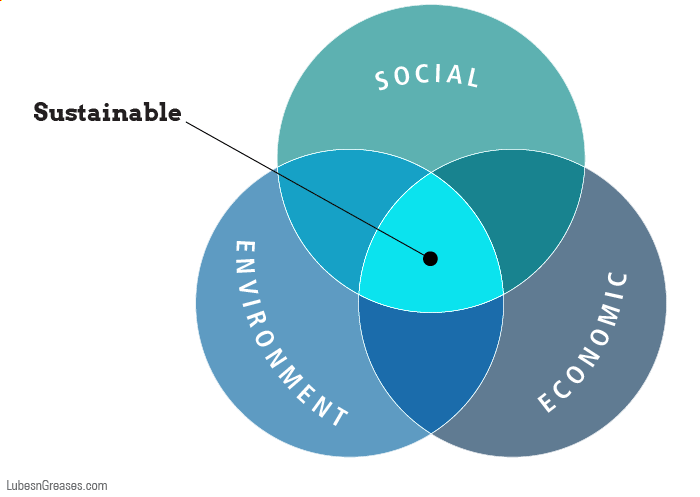Can a steel producer and a wind turbine manufacturer both be considered “sustainable”? Steel is one of the most energy-intensive industries while wind turbines are a vital component in the future of low-emissions energy. It somewhat depends on what these two companies do, how they do it, how you define what sustainable means, how you measure it and who you ask.
Sustainability means different things to different people and has different impacts depending on the organization. A starting place to look for a useful definition is the dictionary. Sustainability is “the ability to be maintained at a certain rate or level.”
The United Nations World Commission on Environment and Development adds to this definition with its core principle about sustainable development:
“Sustainable development is development that meets the needs of the present without compromising the ability of future generations to meet their own needs.” (See UN 17 SDGs.)
The University of California at Los Angeles Sustainability Committee further builds on this principle:
“Sustainable practices support ecological, human and economic health and vitality. Sustainability presumes that resources are finite, and should be used conservatively and wisely with a view to long-term priorities and consequences of the ways in which resources are used.”
Corporate sustainability is typically understood to mean an attempt to use resources responsibly, carry out business profitably and treat the workforce and communities equitably. It includes factors such as manmade climate change, resource use, social responsibility and corporate governance.
“I believe that at its core, corporate sustainability means continuous improvement and there is no bigger room than room for improvement,” said Apu Gosalia, an independent sustainability consultant and academic, told Lubes’n’Greases.
This can include innovating and developing environmentally friendly lubricating products, continually improving processes, reducing energy use, resources and waste, not to mention the de facto contribution lubricants make to sustainability by reducing friction, wear and corrosion, as about 30% of the world’s energy is consumed in friction and wear processes.

The definitions above can be depicted by the “three pillars” or “triple bottom line” of sustainability. Each pillar represents a broad area of concern – social, environmental and economic – against which an organization’s impact can be examined. Many of the principles and goals of sustainability apply across all types of businesses. But Sustainability InSite will also look more closely at how they apply to the lubricants industry and the companies that form it. In this context, what is sustainability? Is it reducing carbon emissions and waste? Or is it more to do with innovation and profitability? Is it corporate social responsibility and accountability? It is creating a balance of all of those things.
Each pillar can be further divided into impacts a business might have on the world and the impacts from outside it faces in return, as well as the opportunities sustainable operations might present. For example, the environmental pillar can be divided into a company’s carbon emissions, energy efficiency, resource use and waste management. The social pillar can be divided into the treatment of the workforce, position on human rights, corporate citizenship, community engagement and data privacy. The economic pillar can be split into, increasing shareholder and stakeholder value.
Examining these impacts lays the foundation for a strategy to use resources responsibly and efficiently, do business transparently and profitably, and treat the workforce and communities equitably. It also helps communicate these efforts to stakeholders. Sustainability advocates – along with a growing number of business analysts – would say that the process future proofs your business.
It’s easy to see how acting with consideration for such things can benefit workers, the community and the environment. A 2020 report by the Organization for Economic Co-operation and Development examining the ESG investment market contends that companies themselves can also benefit. “A poor environmental record may make a firm vulnerable to legal action or regulatory penalties; poor treatment of workers may lead to high absenteeism, lower productivity, and weak client relations; and weak corporate governance can incentivize unethical behaviors related to pay, accounting and disclosure irregularities, and fraud.”

Having each grown independently over time, the three pillars join up to form an overarching concept of sustainability, as can be seen in the diagram above – the intersection of the three circles creates a sustainable sweet spot. This diagram first appears in 1987, and the three pillars concept predates it. Sustainability is not a new concern.
“Sustainability is a core element of sound corporate management in which economic, ecological and social aspects are taken into consideration and harmonized,” independent German lubricant company Fuchs Petrolub states on its website.
Yet it is still difficult to pin down a universal definition, say Ben Purvis, Yong Mao and Darren Robinson, researchers from the University of Nottingham in the United Kingdom, in a paper published in the journal Sustainability Science. This, they think, “frustrates approaches towards a theoretically rigorous operationalization of ‘sustainability’.” There’s no one-size-fits-all solution and no consensus about what constitutes material action.
A key challenge is that there are some standard definitions but they still leave room for interpretation. That said, there are concerted efforts by a number of organizations to develop overarching frameworks and standards, which is discussed in more detail further on. What follows presents the current t

Sorry, a technical error occurred and we were unable to log you into your account. We have emailed the problem to our team, and they are looking into the matter. You can reach us at cs@lubesngreases.com.
Click here link to homepage